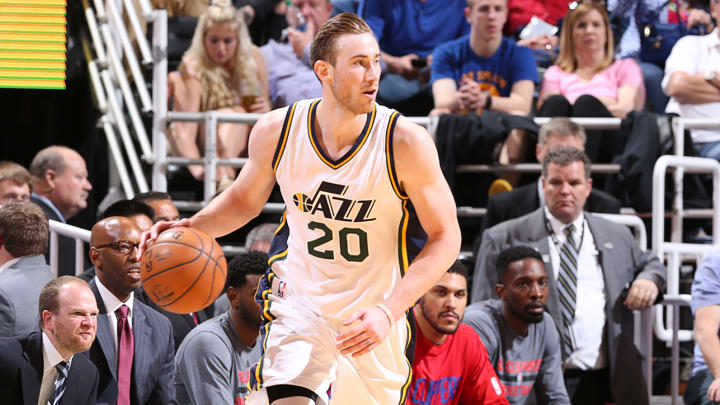27. Gordon Hayward, SF, Jazz

As his teammates took turns missing long stretches with injuries, Gordon Hayward delivered another strong and steady season (19.7 PPG, 5 RPG, 3.7 APG) that was easy to overlook because the Jazz failed to crack the playoffs. A versatile wing who has grown more comfortable and effective as a lead scorer and ball-handler, the 26-year-old Hayward deserves the “Franchise Player” tag, even if he’s never earned All-Star or All-NBA honors and even if he’s not quite potent enough to be included among the NBA’s most fearsome wing scorers. The key to Hayward’s value lies in his durability, his willingness to fill in the gaps for his team, and his lack of major weaknesses. During his six-year career, Hayward has appeared in 93% of his team’s games, avoiding the type of major health issues that often impact high-usage, high-minute wings. Indeed, since emerging as Utah’s leading scorer in 2013–14, he’s logged more total minutes than all but five NBA players. During that time, he’s proven to be an adaptable offensive tool: he works on the ball as a pick-and-roll option and off-the-ball as a spot-up and catch-and-shoot threat. Defensively, he lags a bit behind the NBA’s top two-way wings in terms of sheer physicality, but he’s good at containing and directing ball-handlers and he can switch seamlessly as needed on the perimeter. While Hayward might fall short on the “Can he be the No. 1 guy on a championship team?” question, he absolutely aces the “Would he be able to make strong contributions regardless of the players around him?” test. It’s no wonder that his name started percolating in trade rumors earlier this summer, more than a year before he is eligible for free agency. (Last year: No. 31)
+ He covered 202.9 miles during the 2015–16 season, second only to C.J. McCollum (205.7)
+ He’s made progress refining his game under Quin Snyder, upping his free throw rate and three-point rate while cutting down considerably on his long twos
– His clutch numbers indicate that he was asked to do more than he can handle late in games. Over the last two seasons, he shot 7-for-33 on threes and committed 36 turnovers (versus 24 assists) in 316 clutch minutes
– He can opt out of the final year of his four-year, $63 million rookie extension and become an unrestricted free agent next summer
